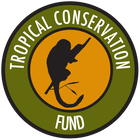Tropical Conservation Fund Nature Excursions
Tropical Conservation-Based Adventures Await
Tropical Conservation Fund group tours, field courses, and research expeditions
Welcome! The Tropical Conservation Fund is a non-profit organization dedicated to the conservation of biodiversity in the Peruvian Amazon. We offer several types of trips, including primate research excursions, ecotourism and wildlife photography trips, and tropical conservation biology field courses. We also lead treks into the Andes, both in the Sacred Valley to Machu Picchu, and also to Huascaran National Park in the Cordillera Blanca.
Primate research excursions are largely designed around research and education, allowing you to learn new field skills while also contributing to our survey work and field research projects. More details here! We also offer ecotourism trips designed to introduce you to some of the wildest places on the planet - whether it be in the Amazon or the Andes. And we also offer field courses in which you can gain valuable field experience and university credit.
Our trips are affordable, educational, full of adventure, environmentally sustainable, and directly support tropical conservation programs in the biodiversity capital of the world. Some of our trips are based in Cusco, a jumping off point to the Amazon, but also centrally located to tourist sites such as Machu Picchu, the Sacred Valley, Andes Mountain treks (such as the Inca Trail, Salkantay, and Lares), and Rainbow mountains.
All trips directly benefit our in-country conservation projects and include direct contributions to Peruvian carbon offset programs.
Want to start your adventure? Please email us for more details. Be sure to follow us on Instagram and Youtube for more updates. For more information about accommodations and research sites, please visit Madre de Dios.
Scheduled trips include research and wildlife excursions to field stations in the Madre de Dios region, and wildlife photography trips to Manu National Park. We are also able to design expeditions to meet the needs of your group. Email us for more details.
Primate research excursions are largely designed around research and education, allowing you to learn new field skills while also contributing to our survey work and field research projects. More details here! We also offer ecotourism trips designed to introduce you to some of the wildest places on the planet - whether it be in the Amazon or the Andes. And we also offer field courses in which you can gain valuable field experience and university credit.
Our trips are affordable, educational, full of adventure, environmentally sustainable, and directly support tropical conservation programs in the biodiversity capital of the world. Some of our trips are based in Cusco, a jumping off point to the Amazon, but also centrally located to tourist sites such as Machu Picchu, the Sacred Valley, Andes Mountain treks (such as the Inca Trail, Salkantay, and Lares), and Rainbow mountains.
All trips directly benefit our in-country conservation projects and include direct contributions to Peruvian carbon offset programs.
Want to start your adventure? Please email us for more details. Be sure to follow us on Instagram and Youtube for more updates. For more information about accommodations and research sites, please visit Madre de Dios.
Scheduled trips include research and wildlife excursions to field stations in the Madre de Dios region, and wildlife photography trips to Manu National Park. We are also able to design expeditions to meet the needs of your group. Email us for more details.
Explore our photo gallery of past adventures in the field!
|
|
|
|
